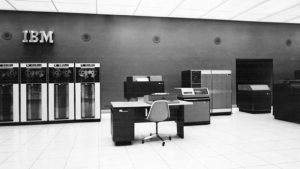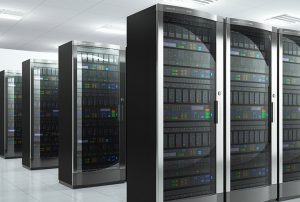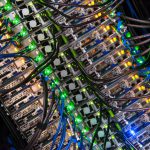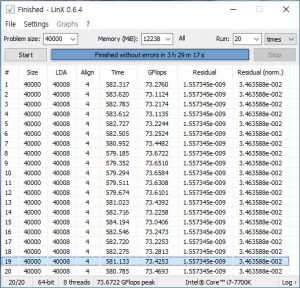Mainframes and Supercomputers, From the Beginning Till Today.
This article is provided by guest author max1024, hailing from Belarus. I have provided some minor edits/tweaks in the translation from Belarusian to English.
Mainframes and Supercomputers, From the Beginning Till Today.
Introduction
We all have computers that we like to use, but there are also more productive options in the form of servers with two or even four processor sockets. And then one day I was interested, but what is even faster? And the answer to my question led me to a separate class of computers: super-computers and mainframes. How this class of computer equipment developed, as it was in the past and what it has achieved now, with what figures of performance it operated and whether it is possible to use such machines at home, I will try to explain all this in this article.
FLOPS’s
 First you need to determine what the super-computer differs from the mainframe and which is faster. Supercomputers are called the fastest computers. Their main difference from mainframes is that all the computing resources of such a computer are aimed at solving one global problem in the shortest possible time. Mainframes on the contrary solve at once a lot of different tasks. Supercomputers are at the very top of any computer charts and as a result faster than mainframes.
First you need to determine what the super-computer differs from the mainframe and which is faster. Supercomputers are called the fastest computers. Their main difference from mainframes is that all the computing resources of such a computer are aimed at solving one global problem in the shortest possible time. Mainframes on the contrary solve at once a lot of different tasks. Supercomputers are at the very top of any computer charts and as a result faster than mainframes.
The need for mankind to quickly solve various problems has always existed, but the impetus for the emergence of superfast machines was the arms race of well-known superpower countries and the need for  nuclear calculations for the design and modeling of nuclear explosions and weapons. To create an atomic weapon, colossal computational power was required, since neither physicists nor mathematicians were able to calculate and make long-term forecasts using the colossal amounts of data by hand. For such purposes, a computer “brain” was required. Further, the military purposes smoothly passed into biological, chemical, astronomical, meteorological and others. All this made it necessary to invent not just a personal computer, but something more, so the first mainframes and supercomputers appeared.
nuclear calculations for the design and modeling of nuclear explosions and weapons. To create an atomic weapon, colossal computational power was required, since neither physicists nor mathematicians were able to calculate and make long-term forecasts using the colossal amounts of data by hand. For such purposes, a computer “brain” was required. Further, the military purposes smoothly passed into biological, chemical, astronomical, meteorological and others. All this made it necessary to invent not just a personal computer, but something more, so the first mainframes and supercomputers appeared.
 The beginning of the production of ultrafast machines falls on the mid-1960s. An important criterion for any machine was its performance. And here on each user speaks of the well-known abbreviation “FLOPS”. Most of those who overclock or test processors for stability are likely to use the utility “LinX”, which gives the final result of performance in Gigaflops. “FLOPS” means FLoating-point Operations Per Second, is a non-system specific unit used to measure the performance of any computer and shows how many floating-point arithmetic operations per second the given computing system performs.
The beginning of the production of ultrafast machines falls on the mid-1960s. An important criterion for any machine was its performance. And here on each user speaks of the well-known abbreviation “FLOPS”. Most of those who overclock or test processors for stability are likely to use the utility “LinX”, which gives the final result of performance in Gigaflops. “FLOPS” means FLoating-point Operations Per Second, is a non-system specific unit used to measure the performance of any computer and shows how many floating-point arithmetic operations per second the given computing system performs.
 “LinX” is a benchmark of “Intel Linpack” with a convenient graphical environment and is designed to simplify performance checks and stability of the system using the Intel Linpack (Math Kernel Library) test. In turn, Linpack is the most popular software product for evaluating the performance of supercomputers and mainframes included in the TOP500 supercomputer ranking, which is made twice a year by specialists in the United States from the Lawrence Berkeley National Laboratory and the University of Tennessee.
“LinX” is a benchmark of “Intel Linpack” with a convenient graphical environment and is designed to simplify performance checks and stability of the system using the Intel Linpack (Math Kernel Library) test. In turn, Linpack is the most popular software product for evaluating the performance of supercomputers and mainframes included in the TOP500 supercomputer ranking, which is made twice a year by specialists in the United States from the Lawrence Berkeley National Laboratory and the University of Tennessee.
When correlating the results in Giga, Mega and Terra-FLOPS, it should be remembered that the performance results of supercomputers always are based on 64-bit processing, while in everyday life the processors or graphics cards producers can indicate performance on 32-bit data, thereby the result may seem to be doubled.
The Beginning
Posted in:
Boards and Systems, Just For Fun


